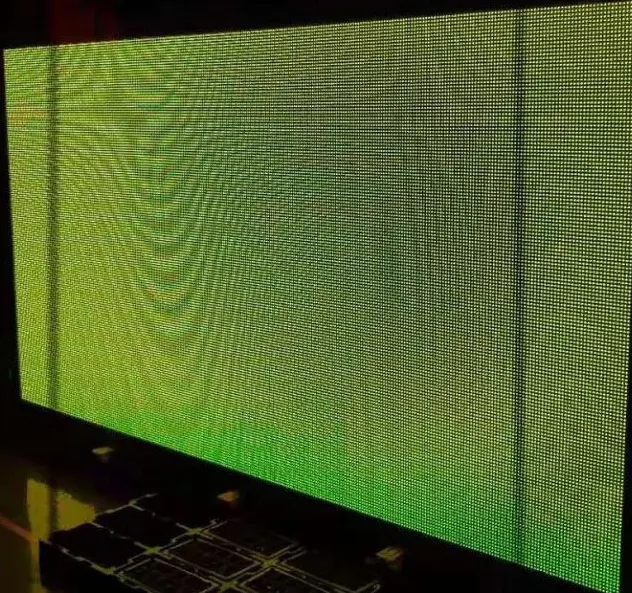Techlion Display
LCD Module Manufacturer
Why does my phone show color ripples when I take a picture of the display?
Color ripple when photographing a display on a cell phone is a fairly common phenomenon that many people may have encountered when trying to photograph a TV, computer screen, or other display. This is often referred to as moiré pattern, and the cause of it involves the interaction between optics and electronics.
Moiré pattern is an optical interference phenomenon that involves the formation of a visible pattern of two or more periodic structures superimposed on each other. This phenomenon usually occurs when there are small relative shifts or misalignments between two or more periodic structures, causing their frequencies to interfere with each other to create a new pattern.

To understand the principle of moire patterns, it is first necessary to understand the basic concept of interference. Interference is the superposition of the amplitudes of two or more light waves when they meet to produce alternating light and dark interference fringes. This interference effect is due to the fact that the peaks and valleys of the light waves superimpose or cancel each other out.
When two periodic structures with similar or interrelated frequencies are superimposed, their frequencies interfere with each other to form a new pattern, known as a moire pattern. This phenomenon has a wide range of applications in fields such as optics, electronics and computer graphics.
In the case of color moiré that occurs when a cell phone captures a display, the principle is that the periodic structure formed between the light-sensitive element of the phone’s camera and the arrangement of pixels on the display interferes with each other. When the camera captures the pixel arrangement on the display, small deviations or misalignments between them result in an interference effect that produces a visible color moiré pattern.
To reduce or eliminate the problem of color moiré when your phone captures the display, you can try the following methods:
Adjust the angle and distance: Try to change the angle and distance between your phone’s camera and the display to find a shooting angle that won’t create interference.
Adjust the focus point: Reduce the occurrence of interference by adjusting the focus point of your phone’s camera to match the pixel alignment on the display.
Change the lighting conditions: When taking a picture, try to avoid strong light shining directly onto the display, as this can increase the intensity of the interference phenomenon. Choosing softer lighting conditions can mitigate the effects of this phenomenon.
Use anti-interference filters: Some cell phone cameras are equipped with anti-interference filters that can reduce or eliminate the appearance of moire. Consider the availability of this feature when purchasing a cell phone.
Overall, although the appearance of color ripples when shooting displays on cell phones is a common problem, its effects can be effectively reduced by adjusting the angle, focus point and lighting conditions to improve the quality of the shot and the viewing experience.
